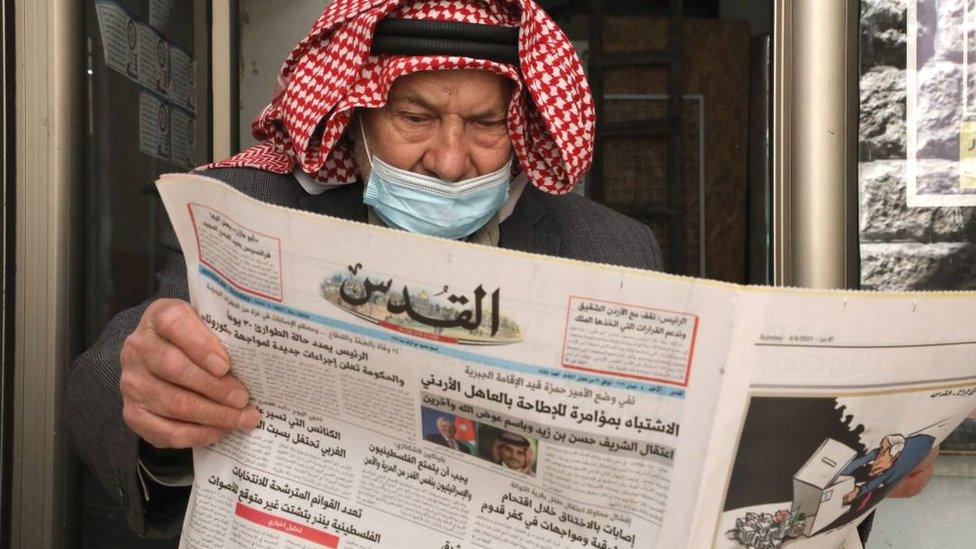Palestinian territories media guide
- Published
This page is no longer being updated. It was last updated on 5 February 2025

Given the political situation in which they live, Palestinians are avid media consumers. Online outlets are the main sources for news consumption, followed by TV and radio.
Political instability and security threats mean journalists work in a high-risk environment. They continue to be subjected to restrictions by the Palestinian Authority (PA), Hamas and Israel.
The media landscape is shaped by the conflict with Israel and the rivalry between the Palestinian Authority, which controls the West Bank, and Hamas, which controls the Gaza Strip.
International watchdogs say the media environment is not free.
"In the West Bank, journalists are the victims of press freedom violations by both the PA and the Israeli occupation forces. In the Gaza Strip, they are threatened by both Israeli military offensives and Hamas policies," says Reporters Without Borders, external (RSF).
The main TV and radio stations are run by the PA's Palestinian Broadcasting Corporation (PBC) and Hamas's Al-Aqsa Media Network.There are dozens of private broadcasters. Pan-Arab satellite TVs, especially Qatar's Al-Jazeera, are popular.
The growth of online media has eroded the traditional dominance of outlets run by the PA and Hamas.
Facebook is the most popular social media platform. Accounts and channels affiliated with Hamas and the Palestinian Islamic Jihad militant group are regularly blocked by social platforms.
There were 4.8 million internet users by January 2024, comprising 88% of the population (Datareportal.com)
Press/Online
Al-Quds, external - private, Jerusalem-based, largest-circulation Palestinian daily
Al-Ayyam, external - private, Ramallah-based daily
Al-Hayat Al-Jadidah, external - Palestinian National Authority daily
Donia al-Watan, external - popular news website
Filastin, external - Hamas-affiliated daily
Radio
Palestinian Broadcasting Corporation (PBC), external - controlled by Palestinian leadership in Ramallah, operates Voice of Palestine
Al Aqsa radio, external - Hamas-run station
Television
Palestinian Broadcasting Corporation (PBC), external - controlled by Palestinian leadership in Ramallah, operates Palestine TV and Palestine Satellite Channel
Al-Aqsa TV, external - Hamas-run station, via satellite
Private stations include Al-Quds Educational TV, Al-Mahd TV, Al-Majd TV, Al-Nawras TV, Watan TV
News agencies
Palestine News Agency - Wafa, external - official, in Arabic, English, French and Hebrew
Ma'an News Agency, external - private, operates with Dutch, Danish funding